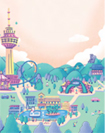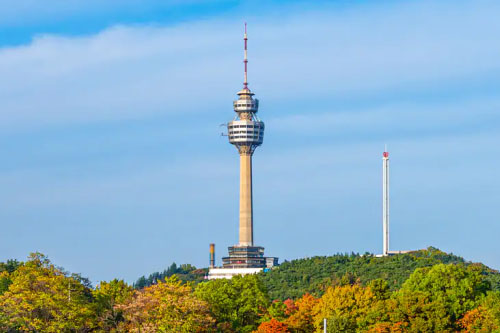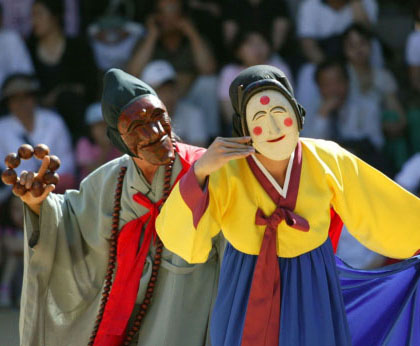About Daegu
Get to Know Daegu
Located in the southeastern inland of the Korean Peninsula, Daegu is the fourth largest city in Korea.
Daegu is surrounded by small cities and villages with numerous historical and cultural sites registered as the World Heritage sites by UNESCO. People can also reach many beautiful beaches in the East Sea, which are only two hours away by car.
Daegu Foundation for Culture & Arts: https://www.youtube.com/watch?v=AcNBb1Ok6Ak

Attractions in & around Daegu
Seomun Market
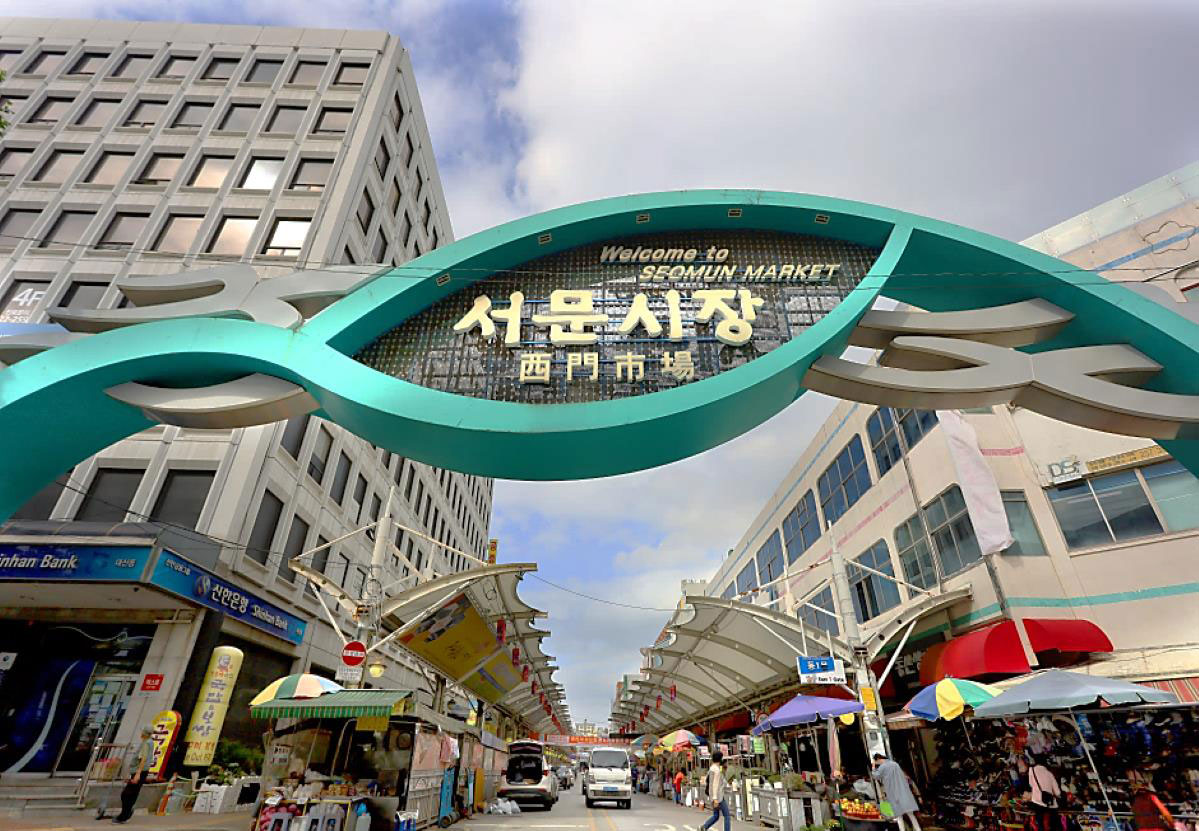
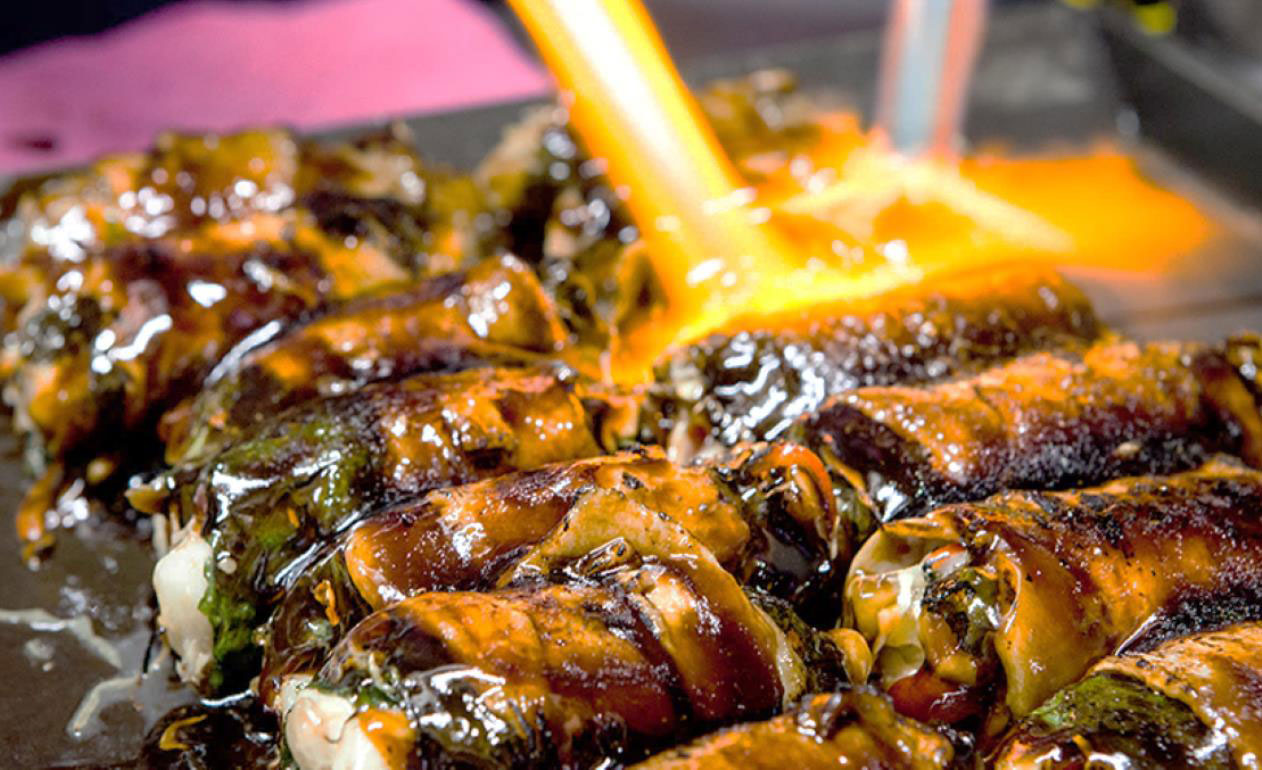
Seomun Market is the largest market in the city, with 4,000 stores that feature all sorts of goods from household items, to fresh produce, and ready-to-eat food. The atmosphere is bustling, and the people are friendly, making it an exciting place to spend an afternoon.
Seomun Night Market stretches over 350 meters and features over 80 kiosks selling a variety of food and goods. It offers a magical experience with diverse food to eat, sights to see, and entertainment to enjoy, unfolding all year round.
| Address | 10, Keunjang-ro 28-gil, Jung-gu, Daegu, Korea | |
|---|---|---|
| Operating Hours |
Day | 9:00 A.M. - 6:30 P.M. * Closed on the first and third Sundays of every month |
| Night | 7:00 P.M. - 10:30 (Sun, Mon, Wed, Thu) 7:00 P.M. – 11:30 (Fri, Sat) * Closed on every Tuesday |
|
| Fees | Varies by stores/food trucks | |
| Website | https://tour.daegu.go.kr/eng/index.do?menu_id=00003078&menu_link=/front/tour/tourMapsView.do?tourId=ENGATTR_125 | |
Modern Cultural Alley
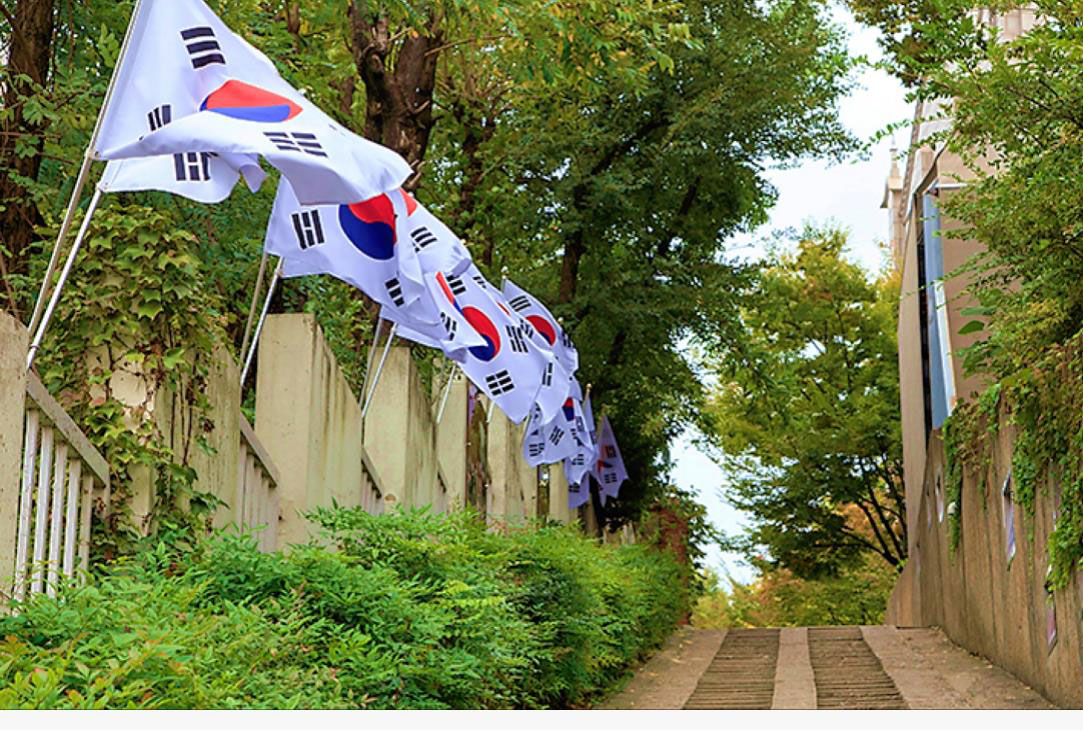
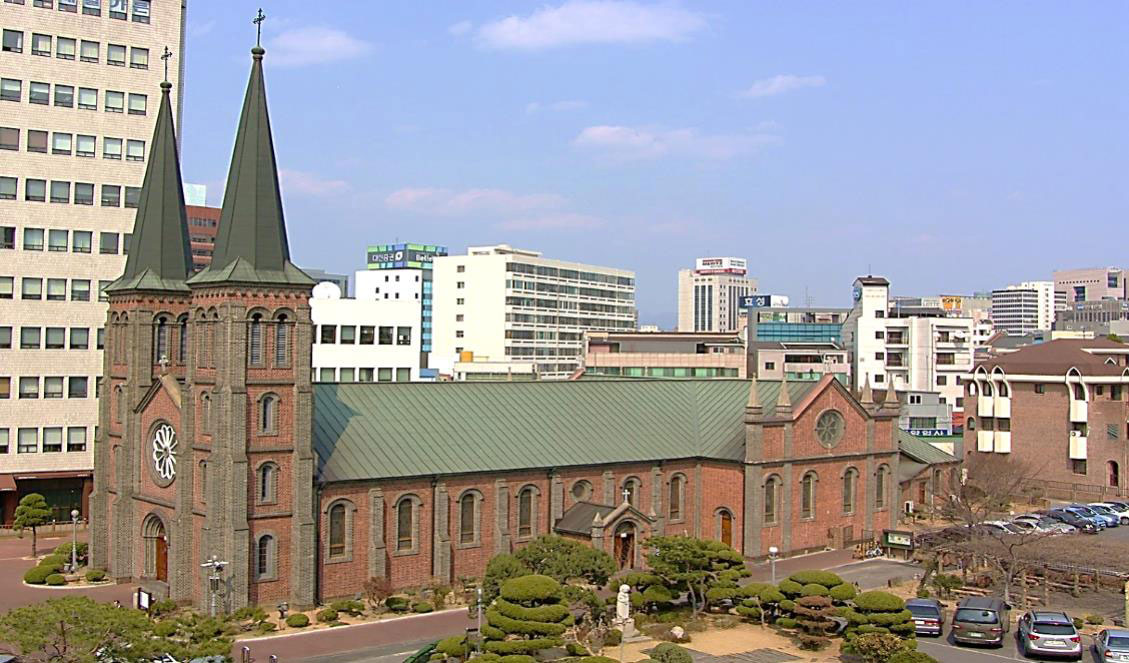
Daegu Modern History Street offers an experience trip to see the modern history that lives on in the alleyways of Daegu.
Compared to other regions, Daegu suffered less damage during the Korean War, allowing the city to clearly show the changes that happened from before and after the war. The course includes locations that were important venues of historical moments from the previous generations.
| Address | 10, Keunjang-ro 28-gil, Jung-gu, Daegu, Korea |
|---|---|
| Operating Hours |
Open all times throughout the year |
| Website | https://www.jung.daegu.kr/new/english/pages/tour/page.html?mc=5040 |
| Fee | Free of charge |
Donghwasa Temple
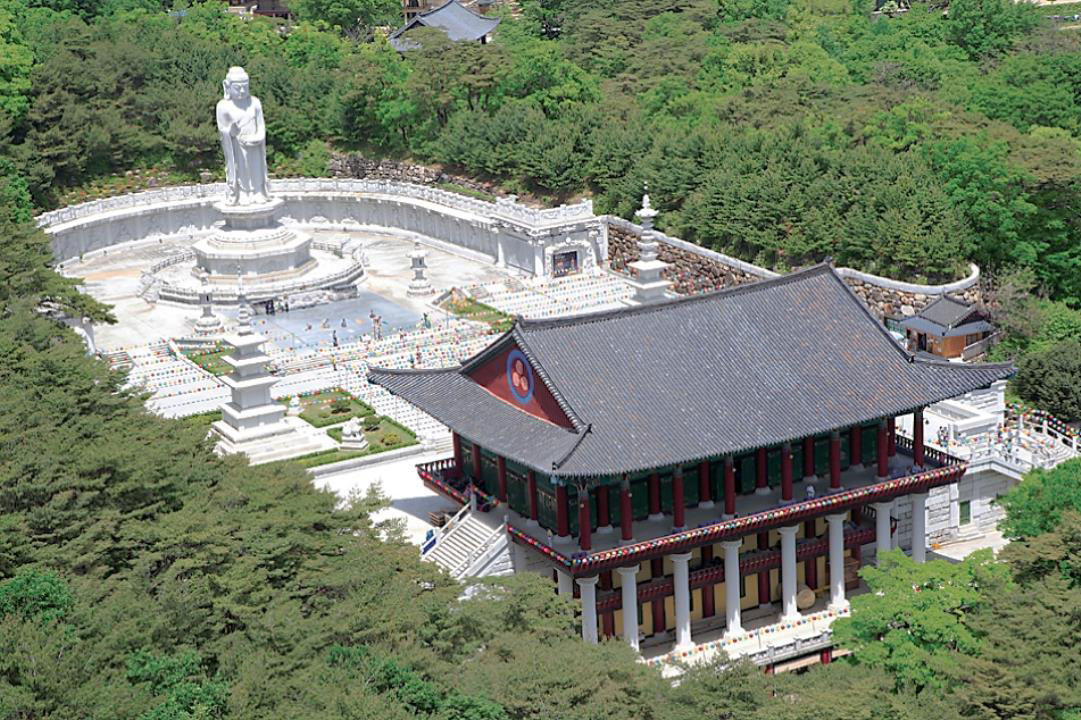

Donghwasa is located in a place that looks like the phoenix brooding on her egg. It is very good place for make-a-wish.
With the massive, world-class stone statue of YaksaYeoraeDaebul on the top of the list, there are several other important treasures and cultural properties in the temple. As one of the most prominent sacred grounds in the east, it has also been designated as one of the ten most popular tourist attractions. As this Buddha statue is open 24 hours per day, all year around, it has become a practicing ground that it never closes.
| Address | 1, Donghwasa-1-gil, Dong-gu, Daegu, Korea | |
|---|---|---|
| Operating Hours |
Open all times throughout the year | |
| Foreign Language Guide Service |
the cultural tourism commentator (English, Japanese) can be invited to make introduction during weekdays or when the foreigner group have made reservation | |
| Admission Fees |
Individuals | Adults 3,000 won / Teenagers 2,000 won / Children 1,500 won |
| Groups (more than 30) |
Teenagers 1,500 won / Children 1,000 won | |
| Fees (Palgongsan Mountain Cable Car) |
One-way | Adults 7,500 won/ Children 4,000 won/ Elderly 6,000 won |
| Round trip | Adults 11,000 won/ Children 6,000 won/ Elderly 9,000 won | |
| Website | https://tour.daegu.go.kr/eng/index.do?menu_id=00003078&menu_link=/front/tour/tourMapsView.do https://tour.daegu.go.kr/eng/index.do?menu_id=00003078&menu_link=/front/tour/tourMapsView.do |
|
Suseongmot Lake
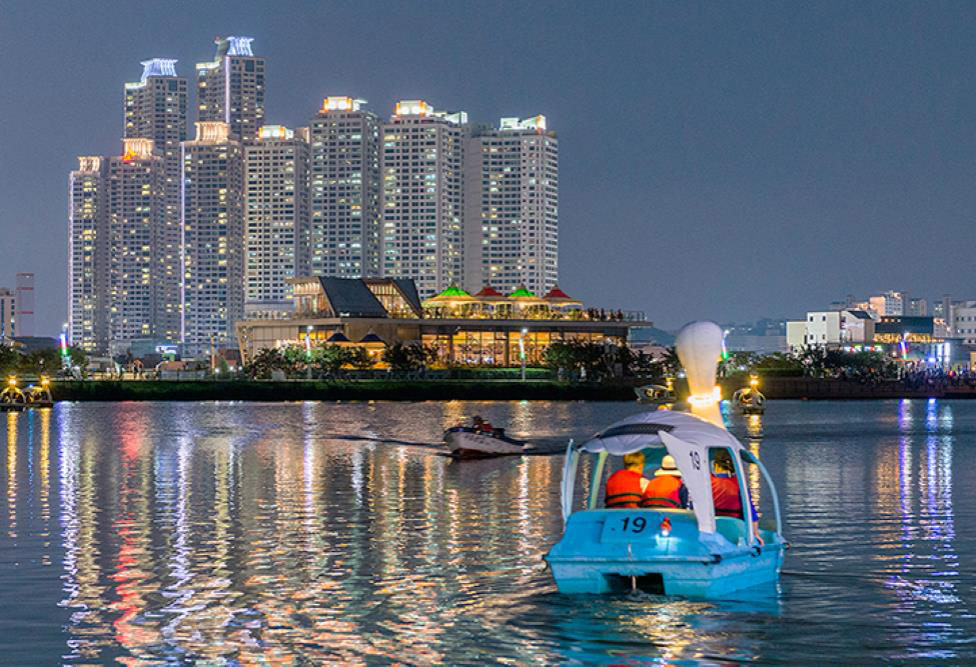
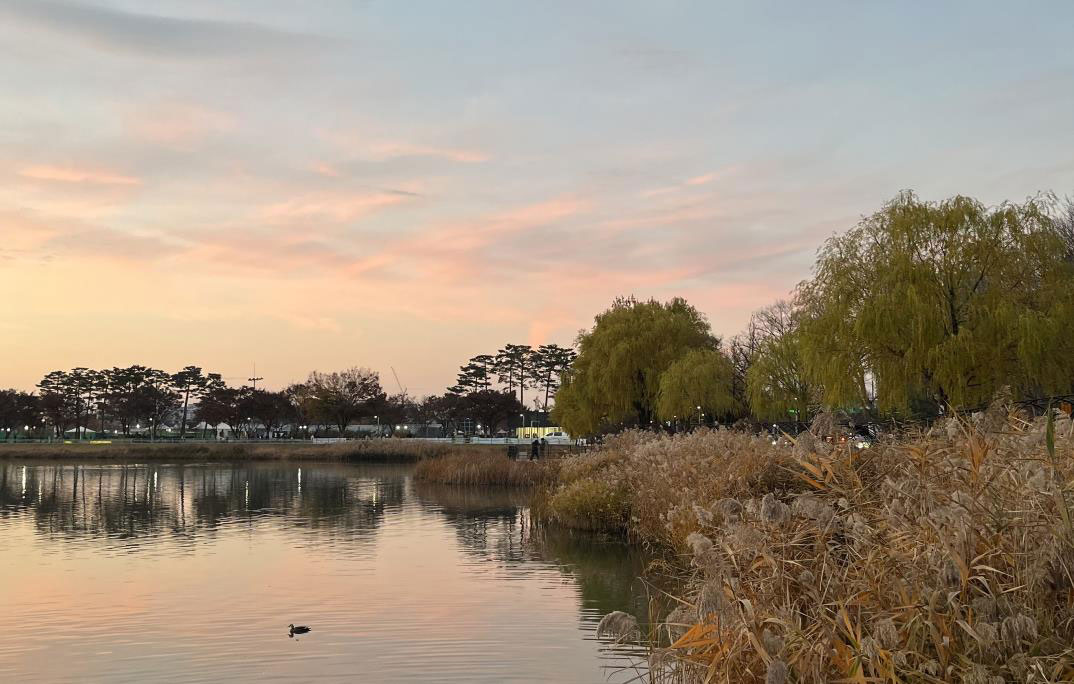
Suseongmot Lake is an artificial lake created in 1925 during the Japanese colonial period to supply water for agriculture to rural areas. Today, it has been turned into a resting area.
Nearby the lake is Suseong Land which houses benches, walking paths, a ferry dock, and entertainment facilities such as a Viking ship, bumper cars, and merry-go-round. In addition, visitors can enjoy a duck boat ride, view of Dusanpokpo Falls and other exciting places perfect for excursions. The lake has a music fountain that operates four times a day from May to October.
| Address | 35-5, Yonghak-ro, Suseong-gu, Daegu, Korea |
|---|---|
| Operating Hours |
Anytime available, but different shops have their open time. 3:00 P.M ~ 1:00 A.M |
| Fees | Amusement park, amusement facilities are all different |
| Website | https://english.visitkorea.or.kr/enu/ATR/SI_EN_3_1_1_1.jsp?cid=2398453 |
For more information on Daegu tourism, please visit the following website.
Seokguram Grotto
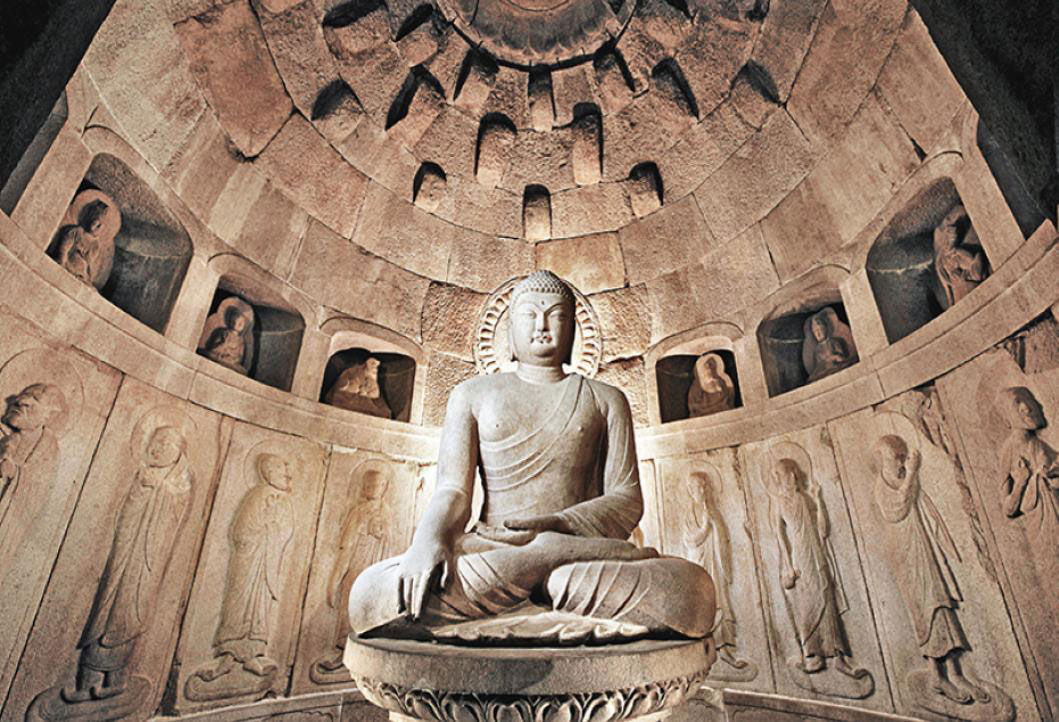
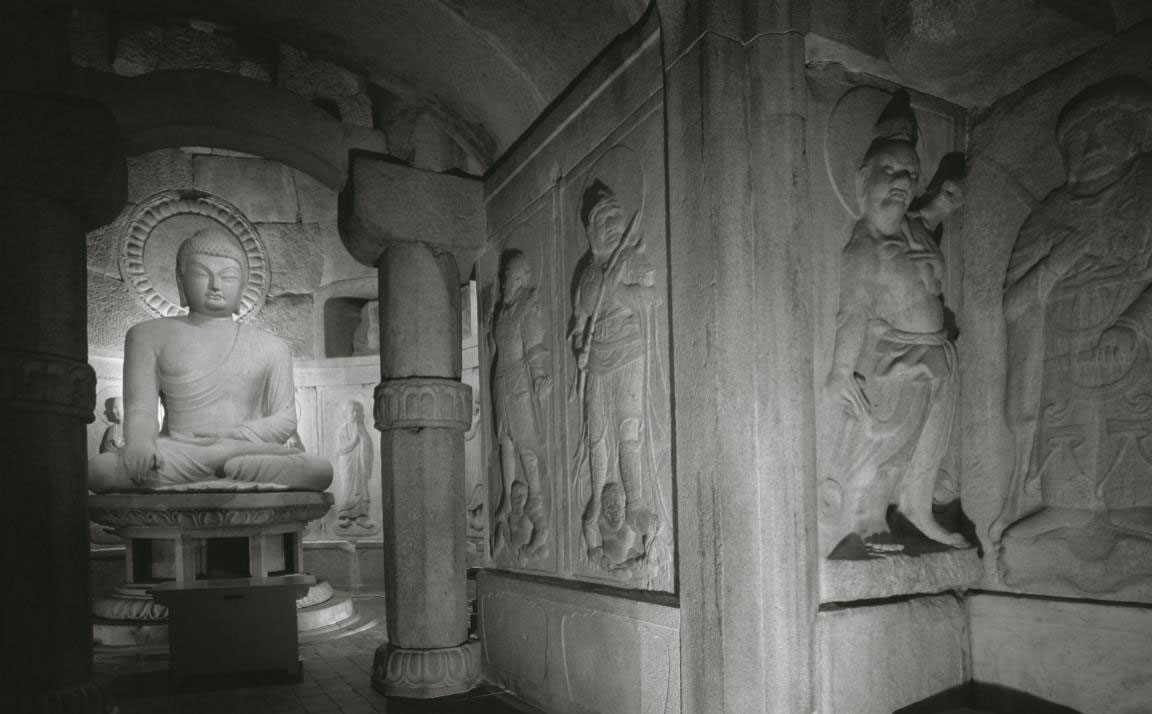
It is a rock cave temple on Mount Toham, 565 meters above sea level in an area with a clear view of the sunrise to express the moment of Buddha’s enlightenment.
Unlike other stone cave temples that were usually made by digging out natural rocks, Seokguram Grotto is a man-made cave that was assembled from pieces of granite. It was registered with the UNESCO as a world cultural heritage in December 1995.
| Address | 873-243, Bulguk-ro, Gyeongju-si, Gyeongsangbuk-do, Korea | |
|---|---|---|
| Operating Hours |
Weekdays | 9:00 A.M. - 5:30 P.M. |
| Weekends& Public Holidays |
8:00 A.M. - 5:30 P.M. * Viewing time until 18:30 P.M. * No pets allowed |
|
| Admission Fees |
Groups (20 people or more) |
Teenagers 3,500 won Children (ages 8-12) 2,500 won Children (ages 7 and under) 2,000 won |
| Individuals | Adults 6,000 won Teenagers (ages 13- 18) 4,000 won Children 3,000 won |
|
| Website | https://english.visitkorea.or.kr/enu/ATR/SI_EN_3_1_1_1.jsp?cid=264260 | |
Bulguksa Temple
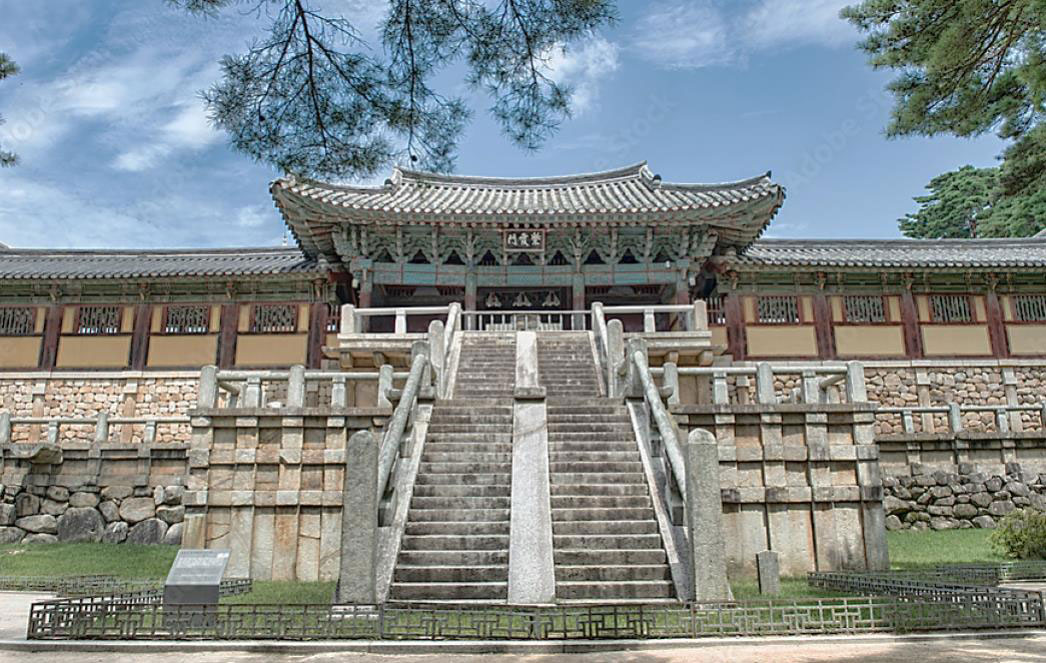
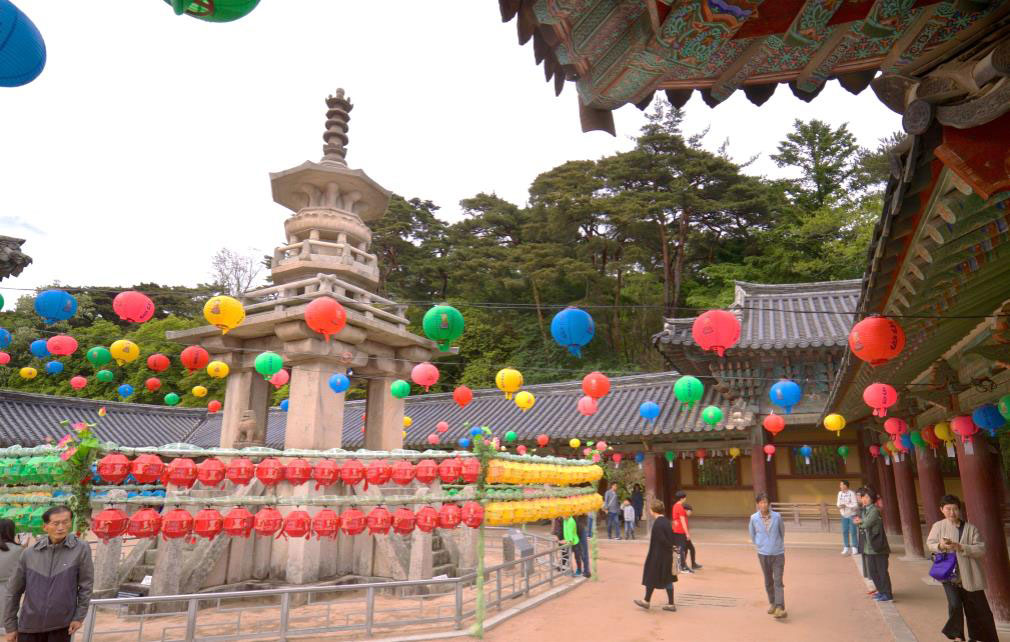
Bulguksa Temple is a representative relic of Buddhist culture from the Silla kingdom. The temple was built to wish for peace and prosperity for all.
The temple now holds seven national treasures and a number of additional important heritages and was designated a World Cultural Heritage Site along with the Seokguram Grotto by UNESCO in December 1995.
| Address | 385, Bulguk-ro, Gyeongju-si, Gyeongsangbuk-do, Korea | |
|---|---|---|
| Operating Hours |
Weekdays | 9:00 A.M. - 5:30 P.M. |
| Weekends& Public Holidays |
8:00 A.M. - 5:30 P.M. | |
| Admission Fees |
Individuals | Adults 6,000 won Teenagers 4,000 won Children (ages 7- 12) 3,000 won Preschoolers (ages under 7) 2,000 won |
| Groups | Teenagers 3,500 won / Children 2,500 won | |
| Parking Fees | Cars 1,000 won/ Buses 2,000 won | |
| Website | http://eng.bulguksa.or.kr/ | |
Hwangridan-gil

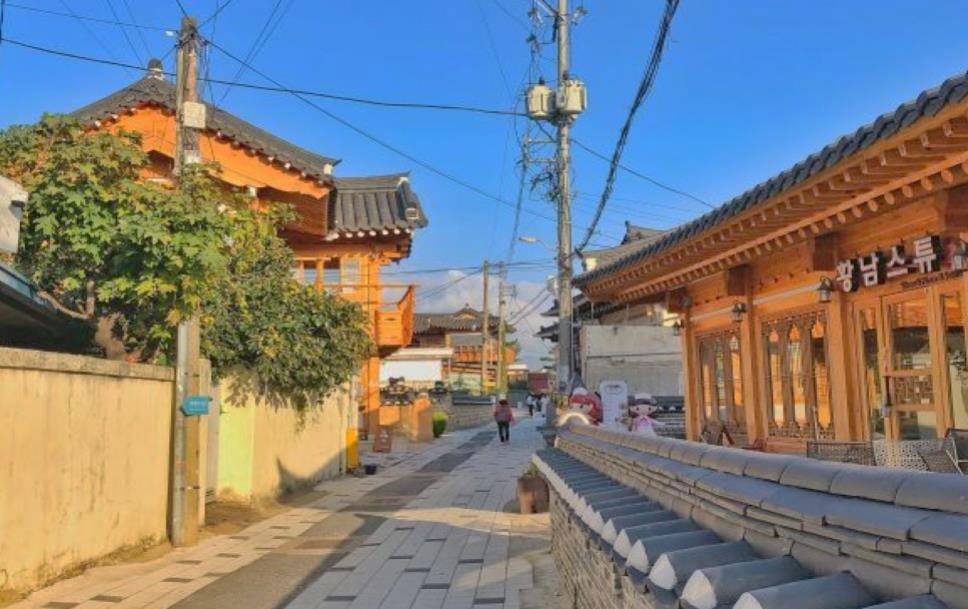
Hwangridan-gil is an alleyway called “Hwangnam Big Road” and is a popular place for young people because of the concentration of traditional hanok (a traditional Korean house with wood-frame construction)- style cafes, restaurants, and photo studios.
You can experience a lot of things at Hwangridan-gil, such as pottery, drawing, and crafts, but we paid attention to fortune-telling machines. You also can try Ingeolmi (Korean rice cake made by steaming and pounding glutinous rice flour) Ice cream with colorful ingredients.
| Address | Poseok-ro, Hwangnam-dong, Gyeongju-si, Gyeongsangbuk-do, Korea |
|---|---|
| Operating Hours |
Anytime available, but different shops have their open time. |
| Website | https://koreandramaland.com/listings/hwangridan-street/ |
Donggung Palace & Wolji Pond
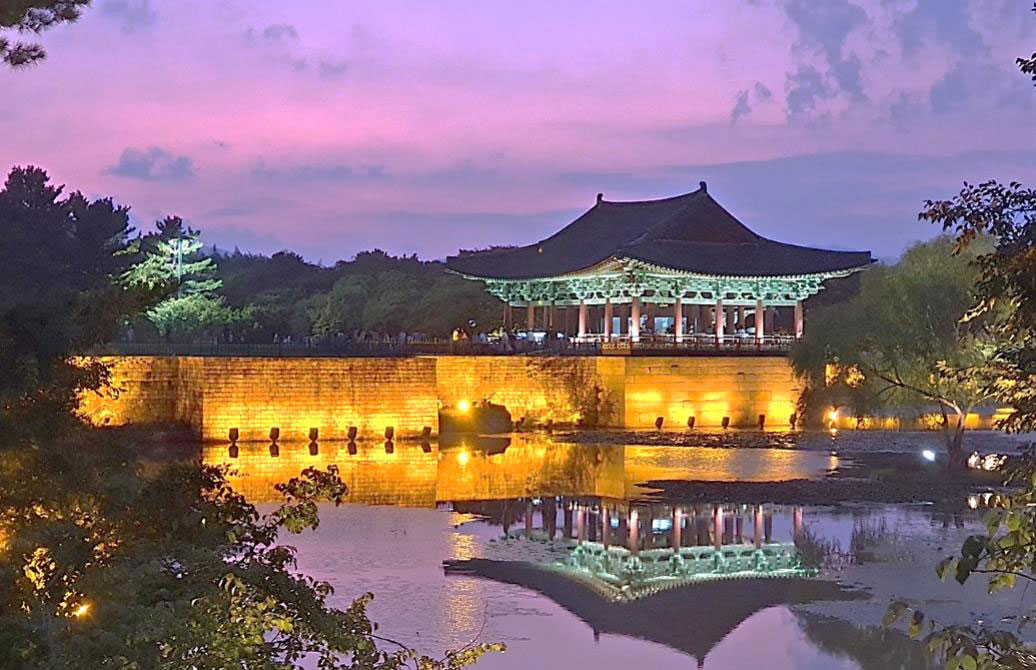
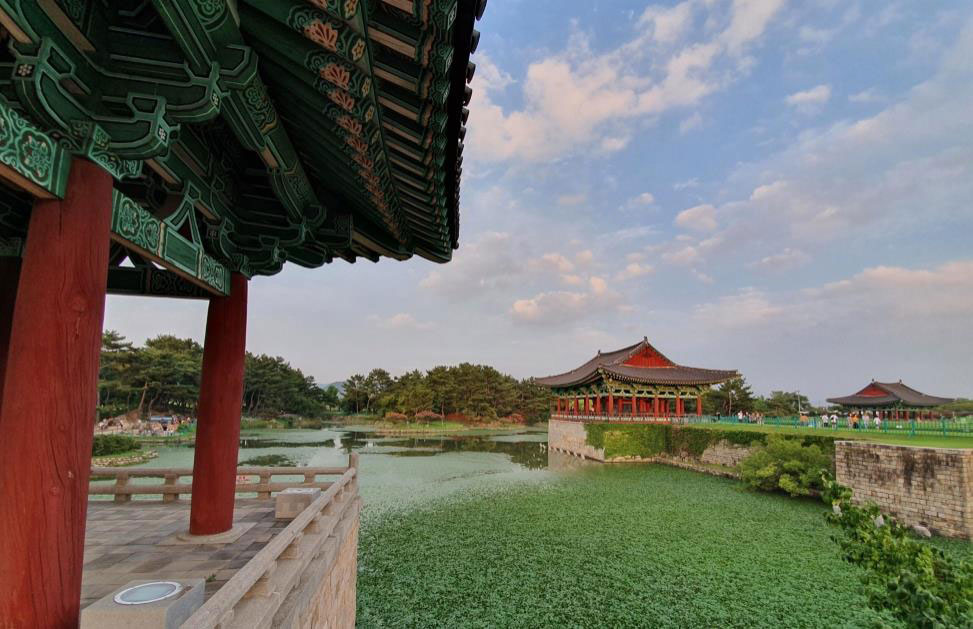
Gyeongju Donggung Palace and Wolji Pond was a secondary palace used by the crown prince of the Silla Kingdom. It also served as a banquet site for important national events and important visitors.
It shows the outstanding landscape architecture of the Unified Silla people who made the narrow pond feel as wide as the sea. The night view is very beautiful.
| Address | 102, Wonhwa-ro, Gyeongju-si, Gyeongsangbuk-do | |
|---|---|---|
| Operating Hours |
09:00 A.M.- 10:00 P.M. * Last admission 30 minutes before closing. * Advised to purchase tickets early as site is a famous nighttime attraction. |
|
| Admission Fees |
Individuals | Adults 3,000 won/ Teenagers 2,000 won / Children 1,000 won |
| Groups (30 people or more) |
Adults 2,400 won / Teenagers 1,600 won/ Children 800 won | |
| Website | https://english.visitkorea.or.kr/enu/ATR/SI_EN_3_1_1_1.jsp?cid=264367 | |
Gyeongju National Museum
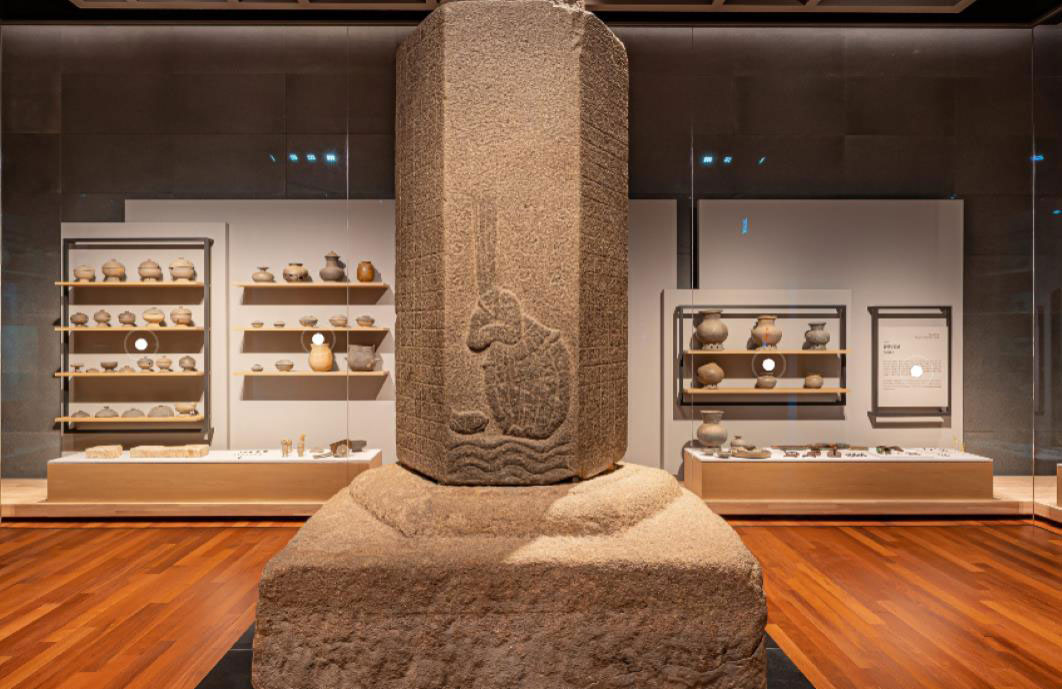
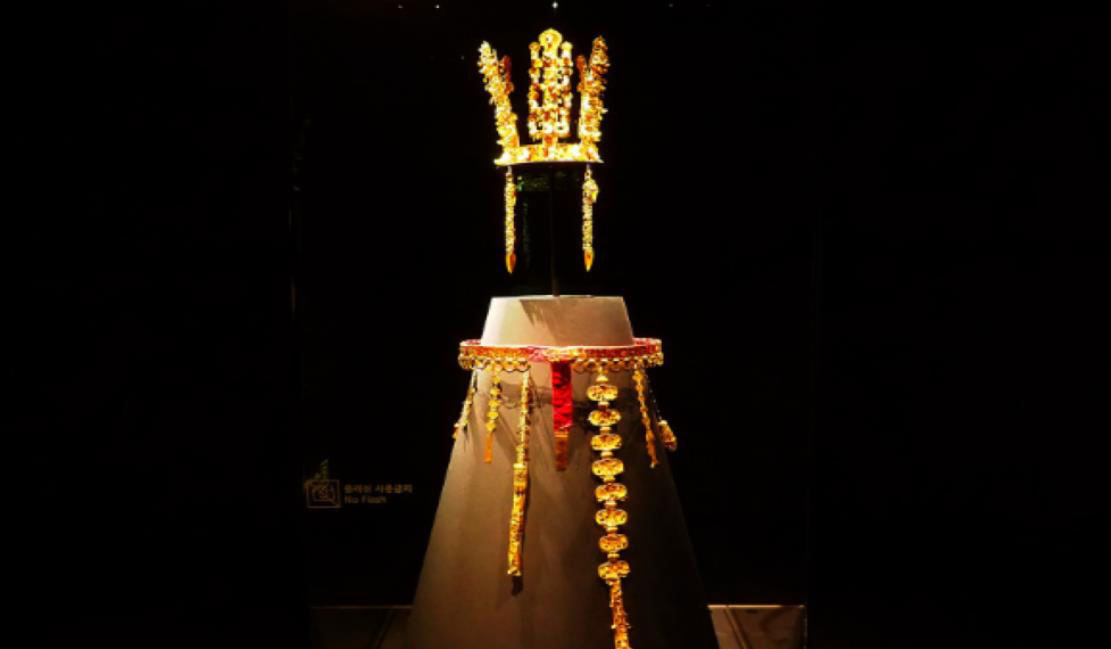
Gyeongju National Museum is one of Korea's leading institutions specializing in the cultural heritage of Silla. Situated within the historic part of Gyeongju listed as a World Heritage Site by UNESCO, it lies close to some of Korea's major historical attraction.
The museum offers three permanent exhibition halls including the Silla History exhibition hall, Silla Art exhibition hall and Wolji exhibition hall, as well as a special exhibition hall. The outdoor exhibition area displays major Silla heritage items.
| Address | 186, Iljeong-ro, Gyeongju-si, Gyeongsangbuk-do, Korea | |
|---|---|---|
| Operating Hours |
Weekdays | 10:00 A.M. - 6:00 P.M. Extended hours: ~ 21:00p.m. (last Wednesday of every month, every Saturday between March and December) |
| Weekends& Public Holidays |
10:00 A.M. - 7:00 P.M. * Closed on January 1 (New Year’s Day), Seollal (Lunar New Year’s Day), and Chuseok |
|
| English Museum Tour | Schedule | Saturdays & Sundays / 10:00 A.M. -11:30 A.M. , 2:00 P.M - 3:30 P.M |
| Departure | The tour starts from the 1F Silla History Gallery by the stairs | |
| Website | https://gyeongju.museum.go.kr/eng/ | |
For more information on Gyeongju tourism, please visit the following website.
Andong Hahoe Folk Village
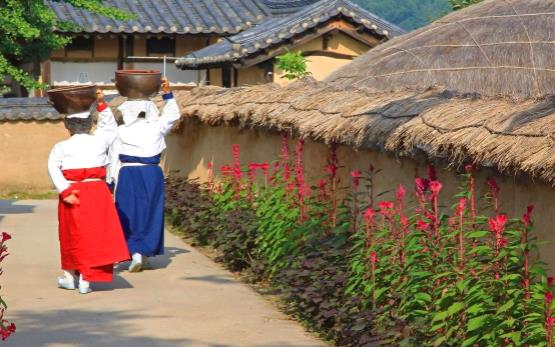
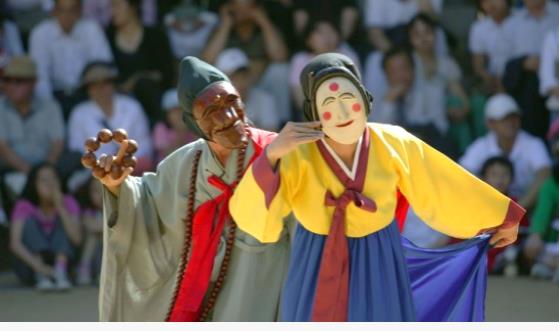
Hahoe is a representative village for one family where tile-roofed houses and thatched roofed ones have been quite well conserved for a long time. The reason for the village name Hahoe (Ha means a river and Hoe means turning around) was that the Nakdong River flows around the village in an S shape.
Hahoe Village, which is listed UNESCO World Heritage, has conserved Hahoe Byeolsingut Mask Dance Play performed by the public in general. The village conserves many cultural heritages which show Korean traditional living cultures and ancient architectural styles.
| Address | 2-1, Hahoejongga-gil, Andong-si, Gyeongsangbuk-do, Korea | |
|---|---|---|
| Operating Hours |
Summer | 9:00 A.M. – 6:00 P.M. |
| Winter | 9:00 A.M. – 6:00 P.M. | |
| Admission Fees |
Individuals | Adults 5,000 won / Teenagers 2,500 won / Children 1,500 won |
| Groups | Adults 4,000 won / Teenagers 2,000 won / Children 1,200 won | |
| Website | http://www.hahoe.or.kr/english/sub1.asp | |
Byeongsan Seowon (Confucian Academy)
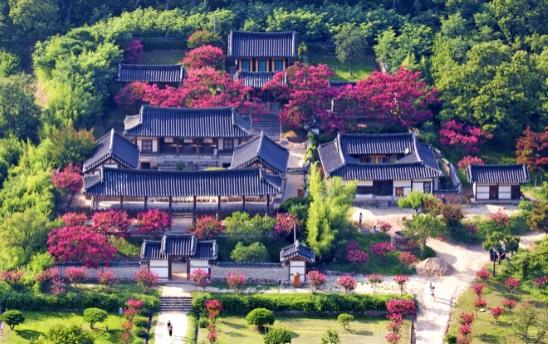
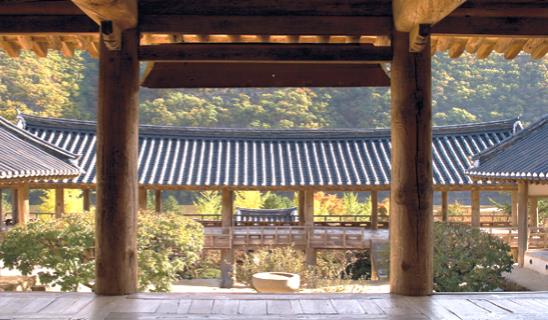
Byeongsan Seowon is an educational institution established in the Joseon Dynasty based on the philosophy of Neo-Confucianism. It was already listed as a UNESCO World Heritage Site as a part of ‘Historic Villages of Korea: Hahoe and Yangdong’ in 2010, even before it was given its own world heritage status as a Seowon.
The Byeongsan Seowon is a good place to take pictures facing Mt. Byeongsan, spreading straight and wide like a folding screen. Byeongsan gets more attractive the more you look at it. It feels like its own, self-contained space, enveloped and cut off from the rest of the world by the mountain.
| Address | 386, Byeongsan-gil, Andong-si, Gyeongsangbuk-do, Korea | |
|---|---|---|
| Operating Hours |
Summer | 9:00 A.M. – 6:00 P.M. |
| Winter | 9:00 A.M. – 6:00 P.M. | |
| Fees | Free of charge | |
| Website | https://english.visitkorea.or.kr/enu/ATR/SI_EN_3_1_1_1.jsp?cid=264458 | |
For more information on Andong tourism, please visit the following website.






